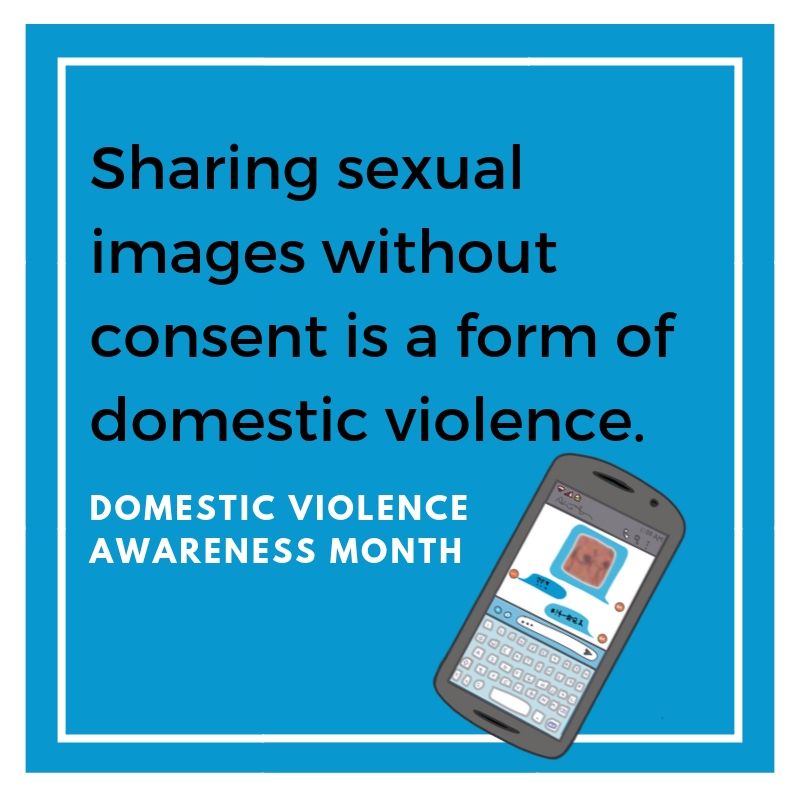
Image-based sexual abuse, commonly known as “revenge porn,” takes place when someone threatens to share, or shares, an intimate, nude, or sexually explicit image or video of an individual – without that person’s consent to do so.
While working as a lawyer with survivors of domestic violence, I saw many of my clients affected by various forms of technology-facilitated abuse. In abusive relationships, a key dynamic is power and control of the abuser over their victim. Image-based sexual abuse often turned into a way for abusers to continue to exert control over their victims.
For instance, many abusers capture intimate, nude or sexual images of their partners, either with — or often even without — their consent. Then, to prevent the victim from leaving the relationship, the abuser wields that image as a weapon of control. Imagine an abuser saying, “If you leave me, I’ll send this naked picture of you to your friends and parents.” This is a classic tactic of abuse, amplified by the use of technology, and keeps many victims fearful of leaving an abusive partner.
And in cases where a victim does manage to safely leave an abuser, we see many instances where the abuser then attempts to continue to control the victim from a distance — including by posting sexual or intimate images of the victim online or sharing those images to friends, relatives, and even employers. Abusers are using these threats to blackmail, control, and manipulate victims.
Indeed, research by Elena Sharratt, a sociologist at the University of Exeter and in partnership with the Revenge Porn Helpline, found that 43% of image-based sexual abuse is perpetrated by male ex-partners after relationships end.
Indeed, even U.S. Supreme Court Justice, Samuel Alito, has stated:
“Threats of violence and intimidation are among the most favored weapons of domestic abusers, and the rise of social media has only made those tactics more commonplace.”
The good news is that many countries around the world, and the vast majority of US states, are now taking action to criminalize this form of abuse. In many places, advocates are mobilizing, calling for domestic violence laws to include image-based sexual abuse as a form of domestic violence that can be prosecuted.
Often, tying image-based sexual abuses cases to domestic violence laws offers victims crucial benefits and protections that they might not otherwise get. For instance, in the UK, advocates have been asking for image-based sexual abuse to be included as part of a domestic violence or sex crimes bill, which could give victims the right to anonymity, and restrict abusers from cross-examining their victims in court — a practice that exacerbates trauma and revictimizes people.
Even so, there’s often a gap in the law: most criminal laws around the world do not criminalize the threat of releasing a sexually explicit image or video. That means that victims don’t have any recourse — if they go to the police, they’ll simply be told that’s not a crime. This results in victims feeling pressured, or blackmailed, to stay with an abuser to minimize the risk that a sexual image will be shared.
A few laws are catching up to this reality, though. In Arizona, a US state, the law criminalizes the threat to disclose an image (even if that image is not shared) as a Class 1 Misdemeanor. In Germany, although threatening to post an image is not a crime, victims have access to civil remedies – for instance, they can request that the perpetrator delete or destroy any unpublished image in his or her possession, even if the abuser has no intention of publishing it. They can also ask for a restraining order that restricts the abuser from posting or sharing the image. These all fall under the protections of ‘right to privacy’ in Germany.
If we are to disrupt the dynamics of domestic violence, and ensure survivors are truly free to leave abusive relationships, we need to push for laws like these that address the threat to share intimate or sexual images without consent. Only then will we be able to truly protect victims’ rights.


